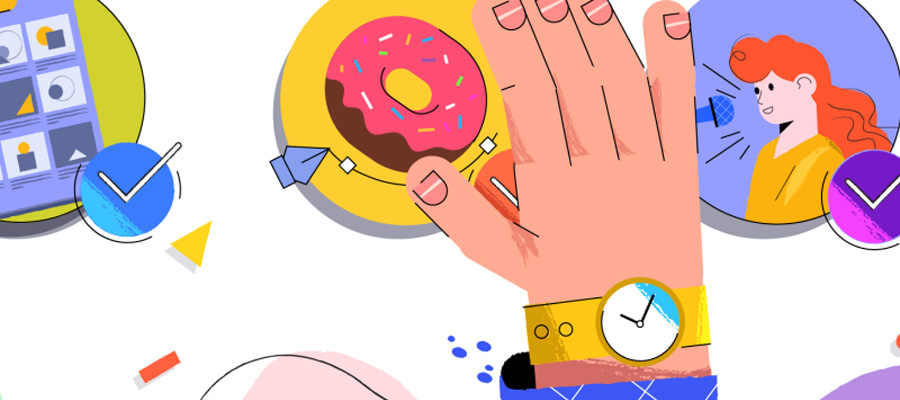How to Keep Your Creative Side in Shape: If you're reading this, chances are you're both creative and tech-savvy. I bet you spend most of your day in front of a computer screen making cool useful stuff. Maybe you design or build websites, or you're an IT whiz who comes up with smart fixes for big problems. Whatever you do, it's crucial to keep your creative mind sharp to keep producing creative ideas and creative work. Here are 10 ways you can do just that and avoid becoming distracted or distracted, which is the opposite of staying focused. Knowing what creative thinking means and having a clear creative thinking definition can help you spot when you're asking yourself "why am I so distracted?" and take steps to get back to your creative work even if you're one of those distracted people who finds it hard to concentrate. Developing strong creative thinking skills is key to becoming a successful creative thinker.

Creativity research reveals that physical movement and outdoor environments can have an influence on creative thinking. Exercise - ranging from walking to Crossfit - boosts heart rate triggering natural endorphins and improving mood. Likewise outdoor settings spark imagination by engaging all senses and energizing body movement with fresh air. Walking and creativity are connected, as walking aids thinking more and generating creative solutions. A walking study investigated why walking aids thinking, discovering that the mix of walking and thinking promotes clear thinking. Even walking while studying can improve memory and learning. Use a device that monitors your movement to encourage standing up and moving more often to help you get more creative. Knowing how exercise helps you get more creative can push you to make physical activity a regular habit. This is one of many examples of creative thinking in action.
2. Make stuff with your hands
Our hands were the first tools we used, and using them to create has an impact on keeping our minds open to consider new ideas, problems and inventive answers. Painting, crocheting, playing a musical instrument and even cooking are all great ways to spark your imaginative thinking skills by engaging your senses and body movement in artistic things. Google "easy DIY" projects to find plenty of ways to explore your creativity skills if you don't know what you want to try. And when you've created your homemade masterpiece, don't forget to claim it as your own and capture it in a body movement photography shot. This is one of the key types of creative thinking.
3. Create something new each day
Creativity requires practice just like any other skill. You might hit roadblocks that stop you from working on your chosen project - that's normal, but it doesn't let you off the hook. Set aside your current project and focus on making something else as part of your daily creative routine. It can be anything - a poem, a scarf, a random image, or a brainstorming session. Any activity that gets you thinking and finishing a project will make you feel good, spark new ideas, and help your mind relax allowing you to tackle other tasks. Making something every day helps build your creative process and idea generation skills over time. There are many great books about creative thinking that discuss the importance of a regular creative process, such as The Art of Creative Thinking.

4. Figure out how to get rid of distractions
We've all encountered writer's block, but every type of creative work has its own version. Whatever your craft, learn to concentrate on it by cutting out things that sidetrack you with online distractions. If you work on a computer, think about adding browser extensions that stop you from visiting your favorite time-wasting sites and help you stay focused. If your craft lies elsewhere, use timers to give yourself set times to work on your project allowing yourself a break when you meet the goal to get into a creative rhythm. Getting rid of distractions is crucial to keeping your concentration, one of the most vital parts of an effective system for getting things done. Maintaining focus is a key part of the creative process and creative strategies.
5. Take breaks
Let's face it, nobody can stay creative all day long. Give your eyes some rest by looking away from your computer screen every 10 minutes. Focus on something far away. Stand up and move around. Allow yourself to do other things for a set time, like browsing the web for fun. This helps you avoid burnout and come back to work with a creative mindset. Breaks help stop your brain from getting overloaded, which can lead to feeling overwhelmed and less creative. Taking breaks is an important part of creative leadership and finding creative opportunities.

6. Write, write, write
Super organized isn't what folks think of when it comes to creative types, but these handy gadgets have become must-haves for many of the most imaginative people in history. Lists and notes form a key part of many artistic brains, but you can use yours to boost your creative thinking by jotting down everything. For example keeping a journal of everyday annoyances (the coffee shop shuts too soon, Photoshop won't move past image edges, etc.) can spark you to dream up a clever fix that solves one of these issues - freeing you from frustration and opening the door to a marketable idea that increases your creative work. Use your phone or tablet's note-taking app or take writing up a notch with mind-mapping software that links related ideas or topics to encourage more outside-the-box thinking. Writing is a powerful tool for idea validation and sparking creative inspiration.
7. Set limits for yourself
We often rely on the same approaches when tackling a problem, which can hinder our ability to think and explore different ideas. One exercise that helps broaden your resources is to narrow your focus. Dr. Seuss wrote Green Eggs and Ham after someone challenged him to write a book using fewer than 50 words. Sometimes when you remove an obvious resource for solving problems (time, materials, people), you push yourself to come up with more imaginative solutions and stumble upon unexpected discoveries. Setting limits is one of many effective creative techniques to boost your creative abilities and find original solutions. It encourages lateral thinking, divergent thinking, and unconventional approaches.
8. Consider far-off places
Daydreaming about distant places or times, can boost our problem-solving skills, research suggests. So when you face creative challenges, let your mind wander to Paris or even Christmas 2050 to spark your creative potential and imagination. Considering far-off places encourages open-mindedness and creative reasoning.

9. Embrace the absurd
Exposing yourself to unexpected things helps open your mind to new possibilities. Whatever your creative pursuits, strange comedy, stories, and creative thinking art can all inspire you to think and come up with fresh ideas. Monty Python, Twin Peaks, and The Big Lebowski are well-known examples of offbeat movies, but explore other art forms, music, and creative thinking books to find creative inspiration. Monty Python, Twin Peaks, and The Big Lebowski are well-known examples of offbeat movies, but explore other art forms, music, and books to find inspiration.
10. Connect with people who share your interests
Creative individuals spark creativity in others. Make sure you attend or set up events where you can swap ideas and share laughs with other imaginative thinkers often to keep your mind active. You can join groups in your area or online, or if you're always the one planning things in your circle, check out software for managing venues that can help you arrange your own get-togethers to showcase creative work and boost productivity in a creative way.




















